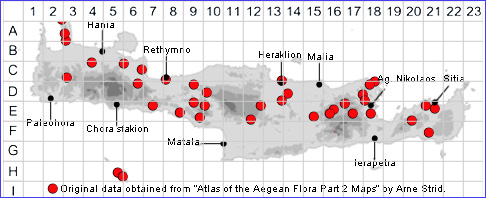SPECIES DESCRIPTION
MEDICAGO RUGOSA
Family and Genus:- See- LEGUMINOSAE/Subgen. CYMATIUM
Common Names:- Wrinkled medick
Homotypic Synonyms:- None.
Meaning:- Medicago (Gr) Median-grass, A name used by the Greek physician
and botanist Dioscorides, from a Persian name for lucerne, or medick.
Rugosa (L) Wrinkled, rugose.
General description:- Glandular-pubescent annual.
Stems:-
1) 15-50 cm, rather stout, ascending, sulcate, shortly glandular- and eglandular-
pubescent.
Leaves:-
1) Leaflets, obovate, cuneate, dentate at least in the upper half.
2) Stipules, lanceolate, incise-dentate, or nearly so.
Flowers:-
1) Peduncles, 2-5-flowered, shorter than the petiole of the subtending leaf.
2) Corolla, 3-4 mm, orange or pale yellow.
Fruit:-
1) Legume, broadly discoid, usually 7-10 mm in diam., without spines, glabrous or
sparsely glandular-pubescent, with 2-4 flat coils; radiating veins on the surface of
the coils sparsely anastomosing, thickened towards the margin, which thus
appears rugose. 3-10 seeded,
2) Seeds, kidney shaped, surface smooth, olive, brown or black.
Key features:-
1) Transverse veins of the legume becoming thickened towards the thick marginal
vein.
Habitat:- Generally a weed of cultivated and fallow fields and olive groves,
occasionally in open coniferous woodland and other semi-natural habitats. 0-600(-
1100) m.
Distribution:- Widespread in the Mediterranean region. Fairly widespread on Crete.
Flowering time:- Mar-May.
Photos by:- Steve Lenton

